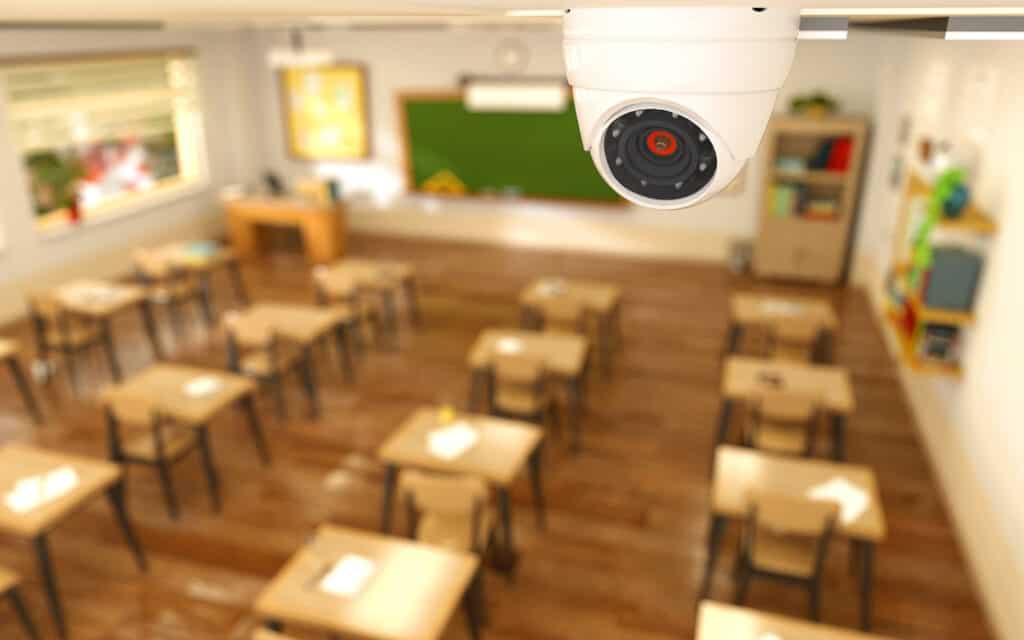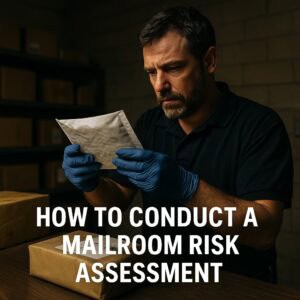School safety should be a top priority for educators, parents, and communities alike.
With the increasing number of threats to schools, both natural and man-made, it is essential to have a comprehensive safety plan in place to protect students and staff.
Developing a well-rounded strategy requires collaboration between various stakeholders, including school administrators, law enforcement, and mental health professionals, as well as a thorough evaluation of potential risks and vulnerabilities within the school setting.
A comprehensive school safety plan begins with conducting a thorough risk assessment to identify the most probable threats and their potential consequences.
This assessment helps school officials determine the most effective measures to mitigate risks and prepare for potential emergencies.
The planning process should involve a diverse team of experts who assess the physical security of school facilities, policies and procedures, and the overall culture of the school.
Assembling an experienced planning team is an important first step in the development of a comprehensive school safety plan.
This team should include representatives from various disciplines, as they will work together to analyze potential threats, establish clear guidelines for the school community, and train staff to implement and maintain the safety measures outlined in the plan.
By engaging multiple perspectives and areas of expertise, schools can create a more secure and supportive learning environment for everyone involved.
Understanding School Safety and Threats
Let’s take a look at the various types of threats and the need for comprehensive safety plans.
School Shootings and Violence
One of the most pressing concerns in school safety is the threat of school shootings and other acts of violence.
Schools must have measures in place to address these issues, such as threat assessment models and preventive frameworks.
It is crucial to identify warning signs, evaluate potential risks, and take appropriate actions to ensure the safety of students and staff.
Natural and Weather-Related
In addition to human threats, natural disasters, and weather-related events pose risks to school safety.
Schools should have plans for emergency evacuation, sheltering in place, and communication during events such as floods, tornadoes, earthquakes, and hurricanes.
Students and staff must be aware of these procedures and be prepared to act swiftly during an emergency to minimize the impact.
Cybersecurity and Data Theft
The growing reliance on technology in schools presents the risk of cybersecurity threats and data theft.
Implementing robust security measures to protect sensitive student and staff information is essential.
Schools should also educate students and staff about safe online practices, password protection, and the importance of reporting cyber threats and incidents.
Bullying and Harassment
Bullying and harassment play a significant role in undermining school safety and the well-being of students.
Schools should have a clear policy defining what constitutes bullying or harassment, and procedures in place for students and staff to report such instances.
Furthermore, schools should implement programs that promote positive behavior, social-emotional learning, and a comprehensive preventative framework to foster a safe and supportive learning environment.
Forming the Planning Team
School Administrators
School administrators play a crucial role in developing a comprehensive school safety plan.
They are usually responsible for overseeing the plan’s creation and ensuring that all stakeholders—teachers, staff, parents, and students—are informed and engaged.
Administrators should collaborate with emergency management professionals and school resource officers to establish clear roles and responsibilities.
This collaboration can help ensure an effective plan that considers the unique needs and challenges of the school community.
Emergency Management Professionals
Involving emergency management professionals in the planning process is essential, as they bring valuable expertise and knowledge about planning for various potential threats and hazards.
They can help the planning team assess the risks and vulnerabilities of the school, design effective emergency response and recovery strategies, and ensure the plan complies with local and federal guidelines.
Collaborating with these professionals can lead to a more robust, well-rounded plan that addresses the needs of the entire school community.
School Resource Officers and Security Personnel
School resource officers and security personnel are critical members of the planning team, given their extensive knowledge of school safety procedures and the potential risks and threats to the school.
Their input can help identify gaps in existing security measures and recommend improvements tailored to the school’s unique needs and circumstances.
Their roles and responsibilities may include:
- Providing input on effective security measures and policies
- Assisting with threat assessments and vulnerability analysis
- Coordinating with local law enforcement agencies and first responders
- Training school staff and students on safety and security procedures
By working closely with school administrators, emergency management professionals, and the wider school community, school resource officers and security personnel contribute to the overall effectiveness of a comprehensive school safety plan.
Assessing Risks and Vulnerabilities
Risk Assessment Process
A comprehensive school safety plan starts with a thorough risk assessment process.
This involves evaluating the existing security measures, identifying potential threats, and determining the school’s vulnerabilities.
The risk assessment should cover various aspects of the school’s environment, including access control, communication systems, and visitor screening procedures.
A multi-disciplinary team of experts can conduct a walk-through of the facilities to assess these factors and identify areas where improvements are needed.
Identifying Potential Threats
Identifying potential threats is crucial for mitigating risks and ensuring school safety.
This includes considering risks related to targeted school violence, natural disasters, and cyber threats.
Schools should gather information from local law enforcement agencies, community organizations, and internal resources to evaluate potential threats.
Based on the information gathered, schools can develop tailored strategies to address each identified threat, strengthen their security measures, and enhance safety protocols.
Developing a Comprehensive School Safety Plan

Addressing Different Types of Violence
A comprehensive school safety plan needs to address various forms of violence that can occur on school premises, including bullying, cyberbullying, and physical violence.
To achieve this, schools should implement programs that promote a positive school culture and encourage students to report incidents of violence.
This includes training for staff and faculty on how to recognize signs and symptoms indicative of potential violence.
Establishing Procedures for Prevention, Intervention, and Response
The foundation of an effective school safety plan lies in establishing clear procedures that address prevention, intervention, and response to emergencies.
This entails:
- Identifying potential risks and hazards within the school environment
- Establishing a trained school safety team to respond to emergencies
- Developing strong relationships with local law enforcement and emergency responders
- Conducting regular drills to ensure staff and students are familiar with emergency protocols
By following these best practices, schools can minimize the likelihood of violent incidents and prepare for efficient handling in case they occur.
Incorporating Mental Health and Suicide Prevention Measures
A comprehensive school safety plan should also incorporate mental health and suicide prevention measures.
This includes providing resources and support for students struggling with mental health challenges and raising awareness about the importance of mental well-being.
Key elements of an effective plan can include:
- Ability to identify warning signs of mental health issues in students
- Creating a supportive environment that encourages open communication about mental health concerns
- Providing training for staff members on how to respond to students in crisis
- Establishing a protocol for addressing serious concerns, such as self-harm or suicide threats
By addressing mental health and suicide prevention as part of a comprehensive safety strategy, schools can create a more supportive environment for all students, fostering stronger educational outcomes, and reducing the risk of school violence.
Implementing the Plan and Ensuring Preparedness
Emergency Management Training
An important aspect of implementing a comprehensive school safety plan is ensuring proper emergency management training for staff, students, and parents.
This training may include classroom instruction, drills, and real-life simulations to ensure everyone is prepared for any emergency situation.
It is crucial to conduct regular practice exercises covering various scenarios like lockdowns, evacuations, and responding to active shooter incidents.
Monitoring and Updating the Plan
As schools constantly change and evolve, the safety plan needs to be reviewed and updated periodically to address any new risks or vulnerabilities.
Conducting comprehensive school safety assessments helps identify high-probability threats and weak points in the current plan.
Revisions should be made based on these findings, and the entire school community should be involved in the updating process.
Educating Staff, Students, and Parents
For a school safety plan to be effective, it is essential that everyone involved understands their role and responsibilities in a crisis situation.
This includes educating staff, students, and parents about lockdown procedures, evacuation plans, parent-student reunification protocols, and emergency communication channels.
By ensuring everyone is informed, the school can function smoothly during emergencies and reduce the risk of confusion or panic.
Partnering with Local, State, and Federal Entities
Collaboration with local education agencies (LEAs), and other relevant federal, state, and local organizations is crucial for implementing a comprehensive school safety plan successfully.
These partnerships enhance the sharing of best practices, resources, and expertise in various safety and security aspects.
Working together also ensures that school safety plans are aligned with community, state, and federal emergency management requirements.
Monitoring and Adapting the School Safety Plan
Regular Reviews and Updates
It is essential for schools to conduct regular reviews and updates of their comprehensive school safety plans.
These reviews aim to ensure that the plan remains relevant, effective, and aligned with current best practices.
Schools should establish a schedule for routinely evaluating their safety plans, involving key stakeholders such as administrators, teachers, parents, and local law enforcement.
The review process should identify any need for modifications, including addressing new or emerging threats (e.g., cyberbullying, vandalism) and incorporating technological advancements for enhanced security measures.
Continual Improvement and Learning from Incidents
Learning from incidents is another crucial element of an adaptive school safety plan.
Schools must thoroughly analyze and document any incidents, ranging from minor disciplinary issues to more severe events.
This analysis should involve debriefing sessions with staff, students, and other stakeholders, with an emphasis on identifying areas that need improvement.
Schools should apply lessons learned from incidents to update their safety plans accordingly to ensure better protection for all individuals in the future.
Redefining Strategies
Maintaining a comprehensive school safety plan requires schools to continually redefine their security strategies and tactics.
As schools evolve and adapt to changing circumstances, they must ensure that their safety plan remains current and effective.
This may involve updating policies, procedures, and practices to align with new information, resources, or programs.
For instance, schools may implement new technological solutions to enhance security and streamline communication or incorporate best practices in mental health and social-emotional well-being to prevent incidents proactively.
Providing up-to-date training for staff members and engaging the school community in ongoing safety conversations are essential components of a dynamic and effective school safety plan.
Frequently Asked Questions

How to identify risks and hazards
Identifying risks and hazards involves conducting a comprehensive risk assessment that examines the various threats and vulnerabilities the school and its surroundings may face. T
his includes evaluating potential natural disasters, human-made threats, and technological risks.
Schools should gather information from local emergency responders, public safety agencies, and other stakeholders to help identify risks and hazards that may be specific to the school or its community.
How to form a safety team
A safety team is an integral part of a comprehensive school safety plan.
This team is responsible for coordinating, developing, and implementing the school’s safety plan.
The team should include representation from various stakeholders, such as school administrators, teachers, staff, students, parents, and community members.
The safety team may also collaborate with local emergency responders and public safety agencies to ensure a comprehensive approach.
How to develop response strategies
After identifying risks and hazards, schools should develop response strategies for each potential threat.
These strategies should be based on the school’s specific needs and characteristics, as identified in their emergency operations plan.
Strategies may include evacuation plans, shelter-in-place procedures, and lockdown protocols.
Response strategies should outline clear steps that staff and students should follow in case of an emergency to ensure their safety.
How to implement safety measures
Implementing safety measures involves putting necessary precautions in place to prevent or mitigate potential risks and hazards.
These measures can include physical security improvements, such as installing video surveillance cameras and securing entry points, as well as implementing policies to address issues like bullying or harassment.
Schools also need to develop communication plans for emergencies, including using social media and other platforms to keep stakeholders informed.
How to train staff and students
Training staff and students on the comprehensive school safety plan, including the school’s response strategies and safety measures, is crucial.
Regular training sessions should cover emergency procedures, communication protocols, and situational awareness.
Drills and exercises involving staff, students, and emergency responders can also help reinforce training and improve preparedness.
How to regularly review and update
Just as risks and hazards may change over time, so should a school’s safety plan.
Regularly reviewing and updating the plan ensures that the policies, procedures, and strategies in place remain current and effective.
Updates should also consider any lessons learned from past incidents, drills, and exercises, as well as feedback from stakeholders and changes in the school or community.
Final Thoughts
Implementing a comprehensive school safety plan is a crucial responsibility for any educational institution.
By involving various stakeholders such as security directors, school administrators, IT directors, and local police and fire officials, a well-rounded plan can be developed that addresses multiple concerns and potential threats.
A successful safety plan encompasses various aspects of school security while ensuring compliance with all applicable laws and regulations.
When creating a safety plan, it is essential to conduct a thorough assessment of the school’s existing security measures.
Such an assessment can help identify areas of improvement, which can be addressed in the plan.
Furthermore, setting specific safety goals for the school year can help focus efforts on achieving measurable improvements.
Lastly, it is crucial to engage the entire school community, including students, parents, and staff, in the development and implementation of the safety plan.
This collective effort can foster a sense of responsibility and ownership, contributing to the overall success of the plan.
Remember, the ultimate goal is to create a safe and secure learning environment for all members of the school community.
Take action now and prioritize the safety of your school community.
Our team of experts will guide you through the process of implementing a comprehensive school safety plan that addresses potential threats.
By involving various stakeholders and conducting a thorough assessment of existing security measures, we will work with you to create a well-rounded plan.
Let’s work together to create a safe and secure learning environment for all.






